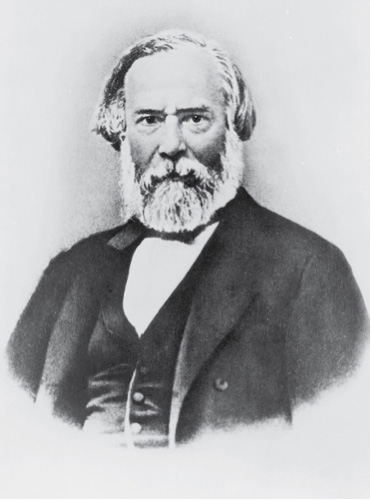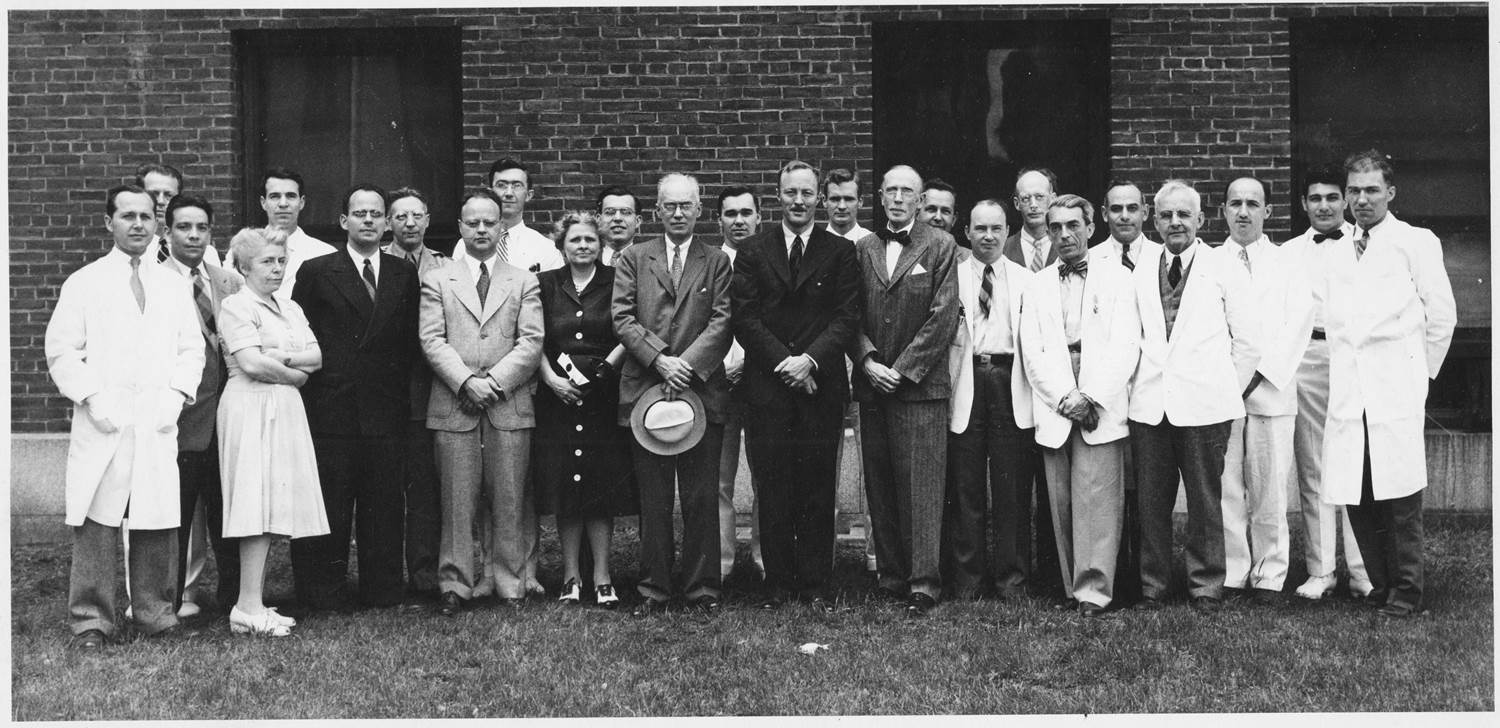History of the Harvard Neurology Department at BIDMC
The Establishment of the Department of Neurology at Harvard Medical School
The first neurologist to be appointed at Harvard Medical School was Charles-Edouard Brown-Sequard, who was appointed as a Professor of Physiology and Neuropathology in 1864-1867. Two of the medical students whom he influenced during this period were William James (who became a Professor of Psychology and the first great neuroscientist at Harvard) and James Jackson Putnam. Putnam specialized in neurological disease and in 1893 was appointed the first Professor of Disease of the Nervous System at HMS. When he died, his family and friends donated funds for the Putnam Chair of Neurology, which has been handed down to subsequent Chairs of the Department.



The Early Years of the Department of Neurology at Boston City Hospital
In the 1920’s the Department of Neurology at Harvard was located at Boston City Hospital. This was a hotbed of development of cognitive neuroscience under Stanley Cobb (who went on to found the first Department of Psychiatry at Harvard); EEG for neurological diagnosis in the hands of Fred and Erna Gibbs and William Lennox; and development of phenytoin as a treatment for epilepsy by H. Houston Merritt and Tracy Putnam. Tracy Putnam (both a neurologist and neurosurgeon and a nephew of J.J. Putnam) headed the Department of Neurology before moving to New York to head the Neurological Institute at Columbia.




The Denny-Brown Years at Boston City Hospital
In 1939, Derek Denny-Brown was appointed to the Putnam Chair and Head of the Harvard Department of Neurology at Boston City Hospital, but World War II intervened, and he was not able to settle permanently in Boston until after the war. The Harvard Boston City Neurology Residency under Denny-Brown trained a succession of leaders of academic neurology both in the US (Joseph Foley, Philip Dodge, H. Richard Tyler, Simon Horenstein, Simeon Locke, Norman Geschwind, Daniel Drachman, Donald Reis, David Dawson, Sid Gilman, Tom Sabin, Robert Feldman, and Louis Caplan) and in England (Roger Bannister, Ian McDonald). In 1950, Raymond Adams left Denny-Brown’s Department to start a Neurology training program and eventually a second Department of Neurology, based at Massachusetts General Hospital.


The Geschwind Years: The Department of Neurology Moves to Beth Israel Hospital
Denny-Brown was succeeded as Putnam Professor and Department Chair in 1968 by Norman Geschwind, who was one of the great leaders of Behavioral Neurology. Geschwind trained a number of neurological luminaries at Boston City Hospital, including Albert Galaburda, Steve Waxman, Marsel Mesulam, Michael Moskowitz, and Dennis Selkoe. In 1975, Harvard Medical School withdrew from Boston City Hospital, and the Neurology Department moved to Beth Israel Hospital. There it combined its residency program with one run by Boston Children’s Hospital and Brigham and Women’s Hospital, to form the Harvard Longwood Neurology Residency. Between 1975 and 2000, the Longwood Program trained many contemporary leaders of Neurology, including Steve Sergay, Marc Dichter, Tom Brott, Arnold Kriegstein, Dennis Choi, Roy Freeman, David Urion, Steve Schachter, Frank Drislane, David Eidelberg, Bruce Korf, Keith Johnson, Frances Jensen, Jeremy Shefner, Jeff Macklis, Jeffrey Saver, Rosalind Segal, Steven Warach, Penny Greenstein, Scott Zamvil, Fred Marshall, Joe Gleeson, Igor Koralnik, David Simon, and Reisa Sperling.



The Emergence of Beth Israel Deaconess Medical Center and the Harvard Neurology Training Program at BIDMC and Boston Children’s Hospital
In 1992, Clifford Saper became the Putnam Professor and Department Chairman, and in 1996 the Beth Israel and New England Deaconess Hospitals merged. The subsequent year, Brigham and Women’s joined Massachusetts General Hospital in the Partners Neurology Residency, and BIDMC joined Children’s Hospital in forming the Harvard Neurology Residency Program at BIDMC and Children’s Hospital. Under Dr. Saper, the Neurology Department at BIDMC has grown from a faculty of 11 full-time neurologists to 55, and has included numerous international leaders in all neurological subspecialties including sleep neurology, stroke and vascular neurology, cognitive neurology, epilepsy, neurogenetics, neuromuscular and autonomic neurology, amongst others. Graduates of the BIDMC-Children’s Neurology Program occupy faculty positions at Harvard and other major teaching institutions throughout the country.


The Establishment of the Department of Neurology at Harvard Medical School
The first neurologist to be appointed at Harvard Medical School was Charles-Edouard Brown-Sequard, who was appointed as a Professor of Physiology and Neuropathology in 1864-1867. Two of the medical students whom he influenced during this period were William James (who became a Professor of Psychology and the first great neuroscientist at Harvard) and James Jackson Putnam. Putnam specialized in neurological disease and in 1893 was appointed the first Professor of Disease of the Nervous System at HMS. When he died, his family and friends donated funds for the Putnam Chair of Neurology, which was handed down to subsequent Chairs of the Department.

In 2022, Dr. Saper was succeeded as Department Chair by Dr. Seward Rutkove, the Nancy Lurie Marks Professor of Neurology at Harvard Medical School. Dr. Rutkove has expanded the neurocritical care and hospitalist faculty, as well as adding faculty in neuro-oncology, movement disorders, neuromuscular, epilepsy, and other areas to further strengthen the Department and the training program.
